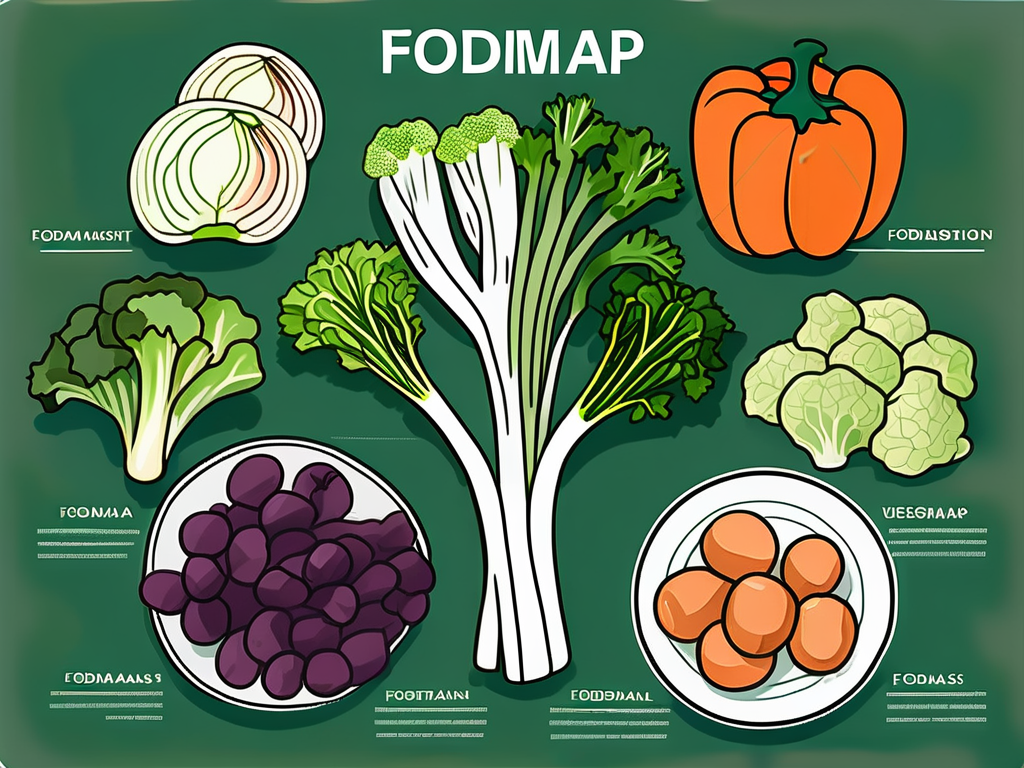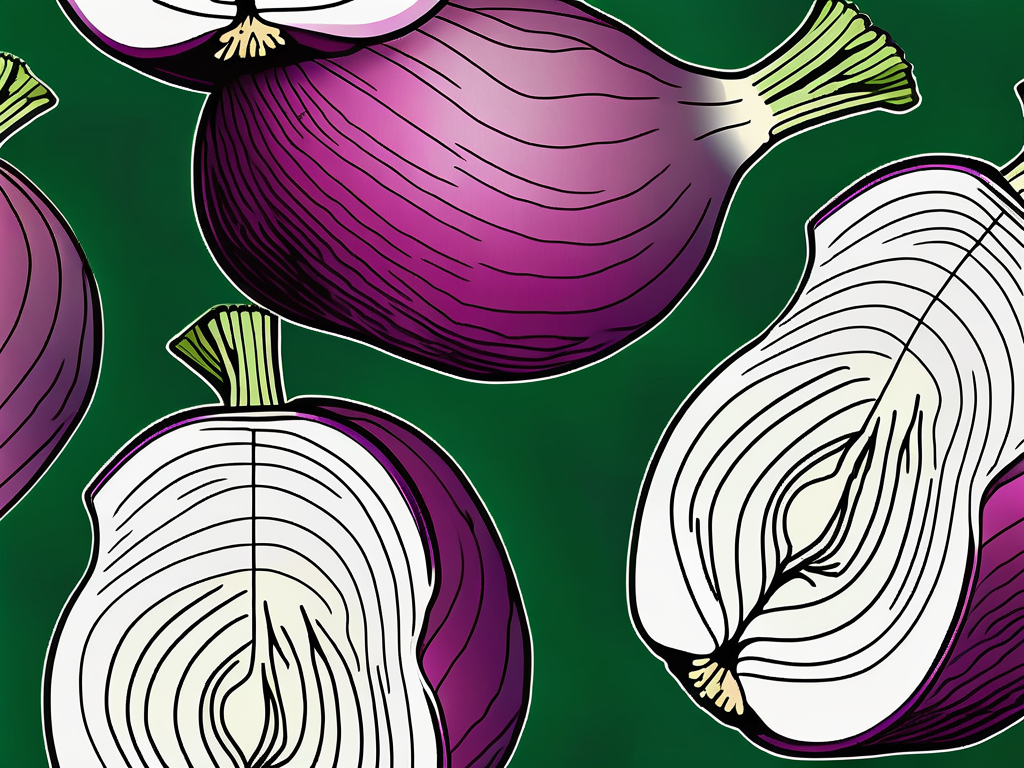Turnip is a popular vegetable known for its distinct flavor and versatility in various cuisines. For individuals following a low FODMAP diet, understanding the FODMAP content of different foods is crucial. In this article, we will explore the topic of whether turnip is low FODMAP and how it can be incorporated into a low FODMAP diet effectively.
Understanding FODMAP
FODMAP stands for Fermentable Oligosaccharides, Disaccharides, Monosaccharides, and Polyols. These are a group of carbohydrates and sugar alcohols found in various foods. For individuals with sensitive digestive systems, FODMAPs can trigger symptoms such as bloating, gas, abdominal pain, and diarrhea.

What is FODMAP?
FODMAPs are short-chain carbohydrates and sugar alcohols that are poorly absorbed by the small intestine. They pass through to the large intestine, where they are fermented by gut bacteria, leading to the production of gas and other digestive symptoms.
Importance of FODMAP in Digestive Health
Understanding the role of FODMAPs in digestive health is crucial, especially for those with irritable bowel syndrome (IBS) or other gastrointestinal disorders. Following a low FODMAP diet can help manage symptoms and improve overall quality of life.
It's important to note that not all FODMAPs are created equal. Some foods are high in one type of FODMAP but low in others, making it necessary for individuals to identify their specific triggers through an elimination diet and reintroduction process. This personalized approach can help individuals enjoy a wider variety of foods while still managing their digestive symptoms effectively.
Common High FODMAP Foods
Some common high FODMAP foods include wheat, onions, garlic, dairy products, stone fruits, and legumes. These foods can be particularly troublesome for individuals with FODMAP sensitivity, but with careful planning and substitution, it is possible to create delicious and nutritious low FODMAP meals.
The Nutritional Profile of Turnips
Before delving into the FODMAP content of turnips, let's take a closer look at their nutritional profile. Turnips are low in calories but high in essential nutrients.

Turnips belong to the cruciferous vegetable family, which includes broccoli, kale, and Brussels sprouts. They are known for their distinct peppery flavor and versatility in cooking. Turnips can be enjoyed raw in salads, roasted as a side dish, or mashed for a creamy texture.
Key Nutrients in Turnips
Turnips are an excellent source of fiber, vitamin C, vitamin K, potassium, and folate. They are also rich in antioxidants, which help protect the body against free radicals and oxidative stress.
One cup of cooked turnip provides over 30% of the recommended daily intake of vitamin C, a powerful antioxidant that supports skin health and boosts the immune system. Additionally, turnips are a good source of vitamin K, essential for blood clotting and bone health.
Health Benefits of Turnips
Due to their nutrient content, turnips offer numerous health benefits. The fiber in turnips promotes healthy digestion and aids in regular bowel movements. The antioxidants present in turnips contribute to overall immune system support and reduce the risk of chronic diseases, such as heart disease and certain types of cancer.
Research suggests that the compounds found in turnips may have anti-inflammatory properties, making them beneficial for individuals with conditions like arthritis or inflammatory bowel disease. Including turnips in your diet can help maintain a healthy weight due to their low-calorie content and high fiber, which promotes satiety.
Turnips and FODMAPs
Now, let's address the main question: Is turnip low FODMAP?

Turnips have been a staple in various cuisines for centuries, prized for their versatility and nutritional benefits. These root vegetables are not only delicious but also offer a range of health benefits, including being a good source of fiber, vitamins, and minerals.
FODMAP Content in Turnips
Turnips are considered low in FODMAP and are generally well-tolerated by individuals following a low FODMAP diet. However, it's important to note that the FODMAP content can vary depending on the cooking method and serving size. Roasting, steaming, or boiling turnips may affect their FODMAP levels differently, so it's advisable to experiment with different preparation methods to see what works best for you.
Additionally, the serving size of turnips can also impact their FODMAP content. While small servings may be well-tolerated, consuming large amounts of turnips in one sitting could potentially lead to FODMAP-related symptoms in sensitive individuals.
How Turnips Affect Digestion
As turnips are low in FODMAP, they are unlikely to cause digestive symptoms for most individuals. However, individual tolerance may vary, and it's important to listen to your body. If you experience any discomfort after consuming turnips, it might be best to reduce your intake or consult a dietitian for personalized guidance.
Furthermore, turnips contain compounds like glucosinolates, which have been studied for their potential anti-cancer properties. These bioactive compounds not only contribute to the unique flavor profile of turnips but also offer additional health benefits beyond their FODMAP content.
Incorporating Turnips into a Low FODMAP Diet
For those on a low FODMAP diet, turnips can be an excellent addition to your meals. Turnips are not only low in FODMAPs but also provide a good source of vitamins and minerals, including vitamin C, fiber, and potassium. Their unique flavor and versatility make them a great option for adding variety to your low FODMAP meal plan.
When selecting turnips, opt for smaller ones as they tend to be less fibrous and have a milder taste. Look for turnips that are firm, with smooth skin and without any soft spots. Storing turnips in a cool, dark place will help maintain their freshness for longer periods.
Preparing Turnips for a Low FODMAP Diet
When preparing turnips, it's important to peel and remove the skin, as some individuals may be sensitive to the skin's fiber content. The turnip bulb can then be sliced, diced, or roasted according to your preference. Roasting turnips can enhance their natural sweetness and create a delicious caramelized flavor.
For a simple and flavorful side dish, try tossing diced turnips with olive oil, salt, and herbs of your choice before roasting them in the oven until tender. You can also add turnips to soups, stews, or stir-fries for an added boost of nutrients and texture.
Other Low FODMAP Vegetables to Consider
While turnips are low in FODMAP, there are plenty of other low FODMAP vegetables to choose from. Some examples include carrots, zucchini, bell peppers, and spinach. Carrots are rich in beta-carotene, which is converted into vitamin A in the body and plays a key role in maintaining healthy vision and immune function.
Zucchini is a versatile vegetable that can be spiralized into noodles, grilled, or sautéed as a low FODMAP pasta alternative. Bell peppers are packed with vitamin C, an antioxidant that helps protect cells from damage and supports a healthy immune system. Spinach is a nutrient-dense leafy green that can be enjoyed fresh in salads or cooked into dishes for added iron and vitamin K.
Consultation with a Dietitian
If you have specific dietary concerns or medical conditions, consulting a dietitian can help you navigate the complexities of a low FODMAP diet.
Embarking on a low FODMAP diet can be overwhelming, especially when trying to decipher food labels and meal options. This is where a registered dietitian can step in to offer expert guidance tailored to your unique needs and preferences.
When to Consult a Dietitian
It is advisable to consult a registered dietitian before making any significant dietary changes, especially if you have a history of digestive issues or are experiencing persistent symptoms. A dietitian can provide personalized guidance based on your individual needs and goals.
Furthermore, a dietitian can help you identify potential trigger foods that may exacerbate your symptoms, ensuring that your low FODMAP journey is as smooth and effective as possible.
Role of a Dietitian in a Low FODMAP Diet
A dietitian plays a crucial role in a low FODMAP diet. They can help you understand FODMAPs, create a customized meal plan, provide shopping tips, and offer ongoing support throughout your journey.
Moreover, a dietitian can assist you in maintaining a balanced and nutritious diet while on the low FODMAP plan, ensuring that you meet your daily nutrient requirements without compromising your digestive health.
In conclusion, turnips are generally considered low FODMAP and can be safely incorporated into a low FODMAP diet. They offer various essential nutrients and health benefits. However, it's always wise to listen to your body and consult a dietitian for personalized advice. With proper guidance, you can enjoy turnips as part of a delicious and nutritious low FODMAP meal plan.
Remember, a dietitian is not only there to provide dietary advice but also to support and empower you on your journey towards better digestive health and overall well-being.